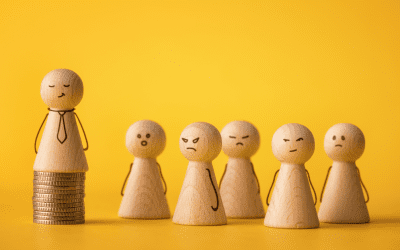I stumbled upon an article on the Content Marketing Institute’s website recently (by Jonathan Crossfield) about originality in content creation. It struck a chord. Not only because it was useful, but also because there are hundreds of new articles all the time about how to be original and creative.
But this one stood out (the best ones do).
Why?
Because originality is evergreen. And teaching other creatives how to overcome the common hurdles faced by storytellers since the dawn of time is always in style.
With thousands of new content creators coming online every year, there is always a new audience of people who need to learn how to produce original work and keep the creative tap flowing.
But isn’t there already a preponderance of information out there about how to do that?
Aren’t there hundreds of articles about creativity and originality?
Well, with the sea of content available on the Internet today, any topic you choose to talk about has been done before. Your job as a creator is to produce content without simply resaying what someone else has said (or at the very least, your job is to resay it better).
Originality isn’t about inventing a new philosophy from the ground of grounds up.
It’s about distinguishing yourself with innovative thought and your own spin. This might mean injecting some of your own story and personality into your work. Or it might mean updating old information for a new audience.
After all, most of what’s said today has been said before. But that doesn’t mean your audience has heard it before. Just because Plato or Aristotle or Nietzsche already had an insight doesn’t mean your audience will know that.
In fact, part of your job in producing evergreen, original content is educating people on what has been done before. Good content enlightens people, in part by pointing them in the direction of other resources to go deeper into a topic.
This Piece Did Exactly That
Crossfield’s piece is a case in point. The author references Stephen King’s famous book, On Writing, which is considered practically holy writ among some modern writers. Crossfield draws on what the master had to say about originality in order to make his own point.
Even though King already wrote about creativity and original thought, Crossfield is able to quote him without simply being redundant. He takes the horror writer’s advice and updates it for, or applies it to, digital content creation in 2022.
King’s “advice doesn’t apply only to bestselling horror novels. The collision of two ideas is a big part of what makes some content fresh and original, even when it may be treading familiar ground.”
Crossfield demonstrates this by combining King’s insights with his own, in order to produce a piece which is at once both fresh and original, and also evergreen.
But What if the Masters Are Wrong?
Crossfield quotes King as saying that “ideas seem to come quite literally from nowhere,” and that the job of writers is “to recognize them when they show up.” But how is that actually helpful for creators trying to meet a rapid content-production schedule? Are creators really just passive vehicles for ideas? Are we supposed to wait around for inspiration to strike?
Here is where I depart from the legendary Stephen King. You see, not only do I find “waiting for the muse” unsatisfying and unhelpful, I think it leaves too much to chance. Originality takes work. It doesn’t come from nowhere.
Before Einstein’s Special Relativity, most physicists believed in a concept called ether. Ether was a substance that encased the Earth and Sun and all the planets. It filled what we today call “space.” This substance was invented to explain away discrepancies in previous physical theories. Einstein demonstrated not only that ether wasn’t necessary to explain physical reality, but that it didn’t exist.
When we say that ideas come from nowhere, or that they come from the muse, we are implying that they “come out of the ether.” In fact, some people literally use that expression.
I think this betrays misunderstanding of how creativity works. It’s true that we often find ideas striking us seemingly “out of nowhere.” But actually, this is only because our subconscious brains have been working away while we’ve been sleeping or distracting ourselves with other tasks.
In fact, Crossfield understands this. He tells us that “creativity isn’t a supernatural burst of inspiration but a way of thinking that we can all practice.” We aren’t uncovering ideas that already exist in the ether, but uncovering previously unexplored connections between different existing ideas.
As I alluded to earlier, sometimes these connections strike us at random times. Part of the job of a creator is ensuring you give your subconscious brain time to work by “doing other things,” which includes sleeping and exercise and household tasks.
But you also need to actively expose yourself to as many ideas as possible in order to uncover preexisting, unexplored connections.
Part of the work of a creator is learning as much as you possibly can, by consuming the best content you can find and by reading what the masters have already written.
Which brings us back to King. It turns out that – as much as I think he’s wrong about ideas coming from nowhere – he knows full well the value of learning. In On Writing, he explains that the job of a writer requires not just professional writing but professional reading.
If you produce other types of content, you need to become a professional listener or a professional watcher. Of course, I’d argue that every creator should always branch out.
Don’t just read – read and listen to podcasts and watch videos etc.
Don’t just read the best marketing articles – read philosophy and poetry and go to art museums and the opera.
If you expose yourself to good art, you will create good art (and that’s what the best content should aspire to be). Because good writing (good content) is evergreen.




